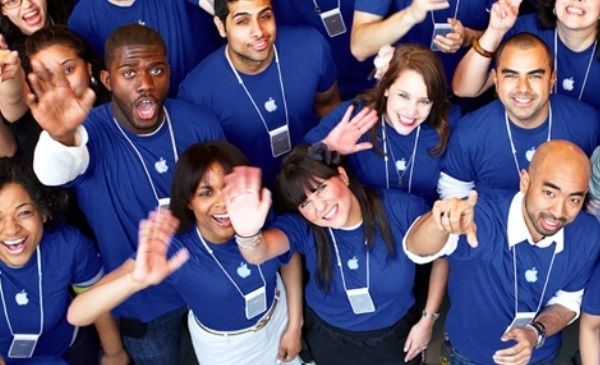
MBAs are taught that a business is worth the sum of its future profits. This benchmark is how investors calculate the fair price of a company’s shares.
CEOs and their management teams are evaluated by their ability to increase the value of their stocks—and therefore care deeply about the ability of their companies to generate free cash flow. Management’s job, in the eyes of shareholders, is to implement strategies to grow future profits by increasing revenues or decreasing expenses.
Fostering consumer habits is an effective way to increase the value of a company by driving higher customer lifetime value (CLTV): the amount of money made from a customer before that person switches to a competitor, stops using the product, or dies. User habits increase how long and how frequently customers use a product, resulting in higher CLTV.
Some products have a very high CLTV. For example, credit card customers tend to stay loyal for a very long time and are worth a bundle. Hence, credit card companies are willing to spend a considerable amount of money acquiring new customers. This explains why consumers receive so many promotional offers, ranging from free gifts to airline bonus miles, to entice them to add another card or upgrade the current one. Potential CLTV justifies a credit card company’s marketing investment.
Habits Supercharge Growth
Users who continuously find value in a product are more likely to tell their friends about it. Frequent usage creates more opportunities to encourage people to invite their friends, broadcast content, and share through word of mouth. Hooked users become brand evangelists—megaphones for your company, bringing in new users at little or no cost.
Products with higher user engagement also have the potential to grow faster than their rivals. Case in point: Facebook leapfrogged its competitors, including MySpace and Friendster, even though it was relatively late to the social networking party. Although its competitors both had healthy growth rates and millions of users by the time Mark Zuckerberg’s fledgling site launched beyond the closed doors of
academia, his company came to dominate the industry.
Facebook’s success was, in part, a result of what I call the more is more principle—more frequent usage drives more viral growth. As David Skok, tech entrepreneur turned venture capitalist, points out, “The most important factor to
increasing growth is . . . Viral Cycle Time.” Viral Cycle Time is the amount of time it takes a user to invite another user, and it can have a massive impact. “For example, after
20 days with a cycle time of two days, you will have 20,470 users,” Skok writes. “But if you halved that cycle time to one
day, you would have over 20 million users! It is logical that it
would be better to have more cycles occur, but it is less obvious just how much better.”
Having a greater proportion of users daily returning to a service dramatically decreases Viral Cycle Time for two reasons: First, daily users initiate loops more often (think tagging a friend in a Facebook photo); second, more daily active users means more people to respond and react to
each invitation. The cycle not only perpetuates the process—with higher and higher user engagement, it accelerates it.
User habits are a competitive advantage. Products that change customer routines are less susceptible to attacks from other companies.
Habits: A Friend Or A Foe
Many entrepreneurs fall into the trap of building products that are only marginally better than existing solutions, hoping their innovation will be good enough to woo customers away from existing products. But when it comes to shaking consumers’ old habits, these naive entrepreneurs often find that better products don’t always win—especially if a large number of users have already adopted a competing product.
A classic paper by John Gourville, a professor of marketing at Harvard Business School, stipulates that “many innovations fail because consumers irrationally overvalue the old while companies irrationally overvalue the new.”
Gourville claims that for new entrants to stand a chance, they can’t just be better, they must be nine times better. Why such a high bar? Because old habits die hard and new products or services need to offer dramatic improvements to shake users out of old routines. Gourville writes that products that require a high degree of behavior change are doomed to fail even if the benefits of using the new product are clear and substantial.
For example, the technology I am using to write this piece is inferior to existing alternatives in many ways. I’m referring to the QWERTY keyboard which was first developed in the 1870s for the now-ancient typewriter. QWERTY was designed with commonly used characters spaced far apart. This layout
prevented typists from jamming the metal type bars of early machines. This physical limitation is an anachronism in the
digital age, yet QWERTY keyboards remain the standard despite the invention of far better layouts. Professor August Dvorak’s keyboard design, for example, placed vowels in the center row, increasing typing speed and accuracy. Though patented in 1932, the Dvorak Simplified Keyboard was written off.
QWERTY survives due to the high costs of changing user
behavior. When first introduced to the keyboard, we use the
hunt-and-peck method. After months of practice, we instinctively learn to activate all our fingers in response to our thoughts with little-to-no conscious effort, and the words begin to grow effortlessly from mind to screen. But switching to
an unfamiliar keyboard—even if more efficient—would force us to relearn how to type.
Users also increase their dependency on habit-forming products by storing value in
them—further reducing the likelihood of switching to an alternative. For example, every e-mail sent and received using Google’s Gmail is stored indefinitely, providing users
with a lasting repository of past conversations. New followers on Twitter increase users’ clout and amplify their ability to transmit messages to their communities. Memories and experiences captured on Instagram are added to one’s digital scrapbook. Switching to a new e-mail service, social network, or photo-sharing app becomes more difficult the more people use them. The nontransferable value created and stored inside these services discourages users from leaving.
Ultimately, user habits increase a business’s return on investment. Higher customer lifetime value, greater pricing flexibility, supercharged growth, and a sharpened competitive edge together equal a more powerful bang for the company’s buck.
More on habits…
- Habits are defined as “behaviors done with little or no conscious thought.”
- The convergence of access, data, and speed is making the world a more habit-forming place.
- Businesses that create customer habits gain a significant competitive advantage.
- Winning via habits requires an experience designed to connect the user’s problem to a solution frequently enough to form a habit.
Contributed to Branding Strategy Insider by Nir Eyal. Excerpted from his book Hooked: How to Build Habit-Forming Products
Don’t let the future leave you behind. Join us in Hollywood, California for Brand Leadership in the Age of Disruption, our 5th annual competitive-learning event designed around brand strategy.
The Blake Project Can Help: The Brand Strategy Workshop For Startups
Branding Strategy Insider is a service of The Blake Project: A strategic brand consultancy specializing in Brand Research, Brand Strategy, Brand Licensing and Brand Education
FREE Publications And Resources For Marketers



















Katie Pirquet’s comment: Victoria, BC in Canada has long enjoyed a resurrected rail bed known as the “Galloping Goose Trail”, named after a noisy, gasoline-fired locomotive that plied its routes long ago. The trail extends from an abandoned gold rush town (Leechtown), 10km from Sooke, BC, some 30km to downtown Victoria, with a branch that wanders about the same distance up the Saanich Peninsula to the town of Sidney. Check it out on Google Maps. It is heavily used by commuters on bikes, walkers, hikers, and joggers. The Trail is accessible to everyone, with safe crossings at many roadways and no big hills. Many sections are paved, others maintained with packed gravel and/or chips. It passes through a few parks on its way, giving access to them, too. The Galloping Goose Trail has become an important feature of the Vancouver Island outdoor-loving lifestyle, and will remain so even if the corridors one day become shared with some form of light transit. Vancouver Islanders love to get “out there”, rain or shine, and the GGT is one of our favourite amenities!